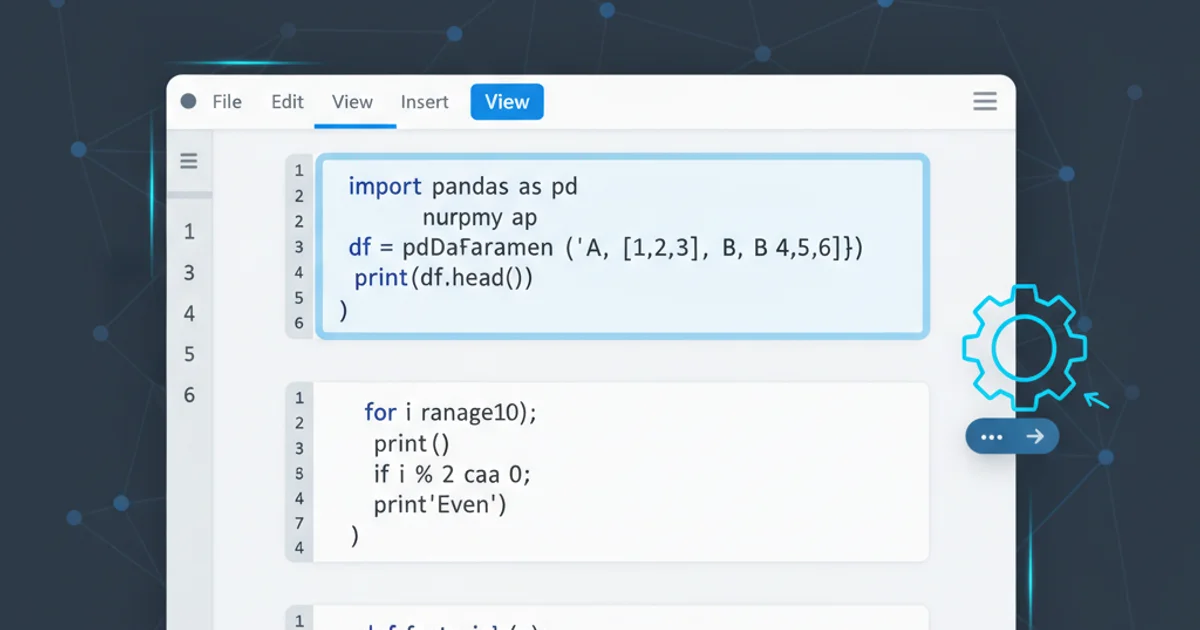What causes "Unable to access jarfile" error?
Categories:
Demystifying the 'Unable to access jarfile' Error in Java

Understand the common causes behind the 'Unable to access jarfile' error when running Java applications and learn effective troubleshooting techniques.
The 'Unable to access jarfile' error is a common frustration for Java developers and users alike. It typically occurs when you try to execute a Java Archive (JAR) file using the java -jar command, but the Java Virtual Machine (JVM) cannot locate or read the specified JAR file. This article will break down the primary reasons for this error and provide clear steps to diagnose and resolve it, ensuring your Java applications run smoothly.
Common Causes of the Error
This error message is quite generic, meaning it can stem from several underlying issues. Understanding these common scenarios is the first step towards a quick resolution.
flowchart TD
A[User executes `java -jar myapp.jar`]
B{Is JAR file path correct?}
B -- Yes --> C{Does JAR file exist?}
B -- No --> E[Error: File Not Found]
C -- Yes --> D{Are file permissions sufficient?}
C -- No --> E[Error: File Not Found]
D -- Yes --> F{Is JAR file corrupted or incomplete?}
D -- No --> G[Error: Permission Denied]
F -- Yes --> H[Error: Corrupted JAR]
F -- No --> I[JAR executed successfully]
E --> J["Unable to access jarfile" Error]
G --> J
H --> JDecision flow for 'Unable to access jarfile' error
1. Incorrect File Path or Name
The most frequent cause of this error is simply providing an incorrect path to the JAR file or misspelling its name. The Java command-line tool needs the exact location and name of the JAR file to execute it. This includes being in the wrong directory when executing the command or using relative paths that don't resolve correctly.
# Example of incorrect path/name
java -jar myapp.jar # If myapp.jar is not in the current directory
java -jar Myapp.jar # If the actual filename is myapp.jar (case-sensitive on Linux/macOS)
Common mistakes in specifying JAR file path or name
2. File Permissions Issues
Even if the path and filename are correct, the operating system might prevent Java from reading the JAR file due to insufficient permissions. This is particularly common on Linux/macOS systems or in environments with strict security policies. The user attempting to run the java -jar command must have read permissions for the JAR file.
# Check permissions (Linux/macOS)
ls -l myapp.jar
# Grant read permissions (if needed)
chmod +r myapp.jar
Checking and granting read permissions for a JAR file
3. Corrupted or Incomplete JAR File
A JAR file might be corrupted during download, transfer, or creation. If the file is not a valid ZIP archive or is missing critical components (like the META-INF/MANIFEST.MF file or the main class entry), Java will fail to access it. This can also happen if the JAR file was not fully downloaded or copied.
4. JAR File is a Directory
While less common, sometimes a user might mistakenly point to a directory that has the same name as a JAR file, or a directory that was intended to be packaged into a JAR but wasn't. The java -jar command expects a single file, not a directory.
# Check if 'myapp.jar' is actually a directory
file myapp.jar
# Expected output for a JAR file:
# myapp.jar: Zip archive data, at least v2.0 to extract
# Expected output for a directory:
# myapp.jar: directory
Using the 'file' command to verify if it's a JAR or a directory
Troubleshooting Steps
Follow these steps to systematically troubleshoot the 'Unable to access jarfile' error.
1. Verify File Existence and Path
Navigate to the directory where your JAR file is supposed to be. Use ls (Linux/macOS) or dir (Windows) to confirm the file exists and its name is spelled correctly, including case sensitivity.
2. Check Current Working Directory
Ensure you are executing the java -jar command from the correct directory, or provide the full absolute path to the JAR file. For example, if myapp.jar is in /home/user/apps, use java -jar /home/user/apps/myapp.jar.
3. Inspect File Permissions
On Linux/macOS, use ls -l myapp.jar to check permissions. Ensure the user running the command has read access. If not, use chmod +r myapp.jar to grant read permissions.
4. Validate JAR File Integrity
Try opening the JAR file with a standard ZIP archive tool (e.g., 7-Zip, WinRAR, or unzip on Linux). If it fails to open or shows errors, the JAR might be corrupted. Re-download or re-build it.
5. Confirm it's a File, Not a Directory
Use file myapp.jar (Linux/macOS) or check its properties in your file explorer (Windows) to ensure it's recognized as a file and not a directory.
6. Check for Hidden Characters or Spaces
Sometimes, filenames can have invisible characters or leading/trailing spaces. Try renaming the file to a simple name like app.jar to rule this out.